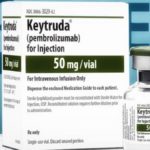Insulin and Pre-Diabetes: What You Need To Know
Understanding insulin and pre-diabetes is crucial for managing blood sugar and preventing type 2 diabetes. This Hormone, produced by the pancreas, enables cells to use glucose for energy. However, with insulin resistance, cells don’t respond correctly, leading to high blood sugar.
Pre-diabetes occurs when blood sugar is higher than normal but not yet diabetic. When you eat carbs, they convert to glucose, prompting the pancreas to release . This hormone who normally helps cells absorb glucose by stabilizing blood sugar levels, and promotes excess glucose storage as glycogen or fat when needed.
What is Insulin Resistance?
It is when cells in muscles, fat, and liver don’t respond correctly to the hormone. This reduces glucose uptake, causing elevated blood sugar levels. The pancreas compensates by producing more of it, leading to higher insulin levels in the body. Over time, this can lead to prediabetes and type 2 diabetes.
Causes of Hyperinsulinemia
It can be caused by factors like excessive weight, inactivity, genetics, a poor diet high in processed foods and sugar, and medical conditions like PCOS and sleep apnea.
Prediabetes Indicators
Prediabetes is signaled by elevated blood glucose levels, indicating difficulty in sugar regulation. According to the American Diabetes Association, fasting blood glucose levels between 100-125 mg/dL and hemoglobin A1C levels of 5.7%-6.4% signify prediabetes.
Risk Factors
- Obesity: Impairs insulin function and affects blood sugar regulation.
- Age: Reduced insulin sensitivity increases risk.
- Family History and Genetics: Increases risk but can be managed with a healthy lifestyle.
- Ethnicity: Groups like African Americans, Hispanics, and Asians have a higher predisposition.
- Physical Inactivity: Promotes weight gain and impairs blood sugar regulation.
Causes and Symptoms of Insulin Resistance and Prediabetes
Excessive weight and lack of physical activity can lead to Hyperinsulinemia and prediabetes. Signs may include darkened skin patches (acanthosis nigricans) and skin tags. Consult a healthcare professional if you notice these signs.
Diagnosing Insulin Resistance and Prediabetes
Hyperinsulinemia and prediabetes can be diagnosed through blood tests like the A1C test, fasting blood sugar test, and oral glucose tolerance test.
Managing Insulin Resistance and Prediabetes
Lifestyle changes such as weight loss, regular exercise, and a healthy diet can help manage your levels. In some cases, medication like Metformin may be prescribed.
Conclusion
Understanding insulin levels is vital. By doing so, you can maintain your blood sugar levels and prevent type 2 diabetes for as long as possible. If you are not yet diabetic, consider adopting healthier habits such as maintaining a healthy weight and engaging in regular physical activity.



